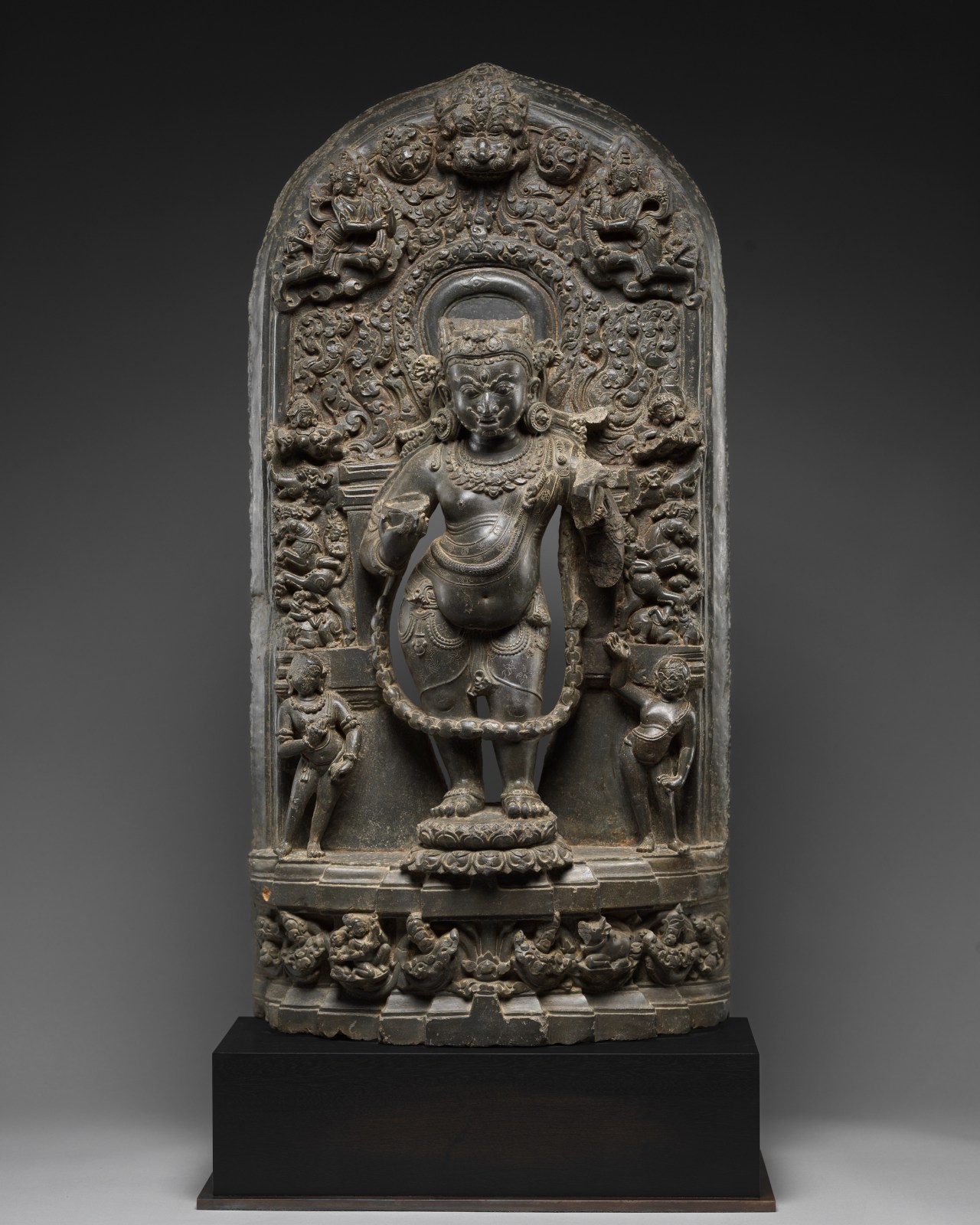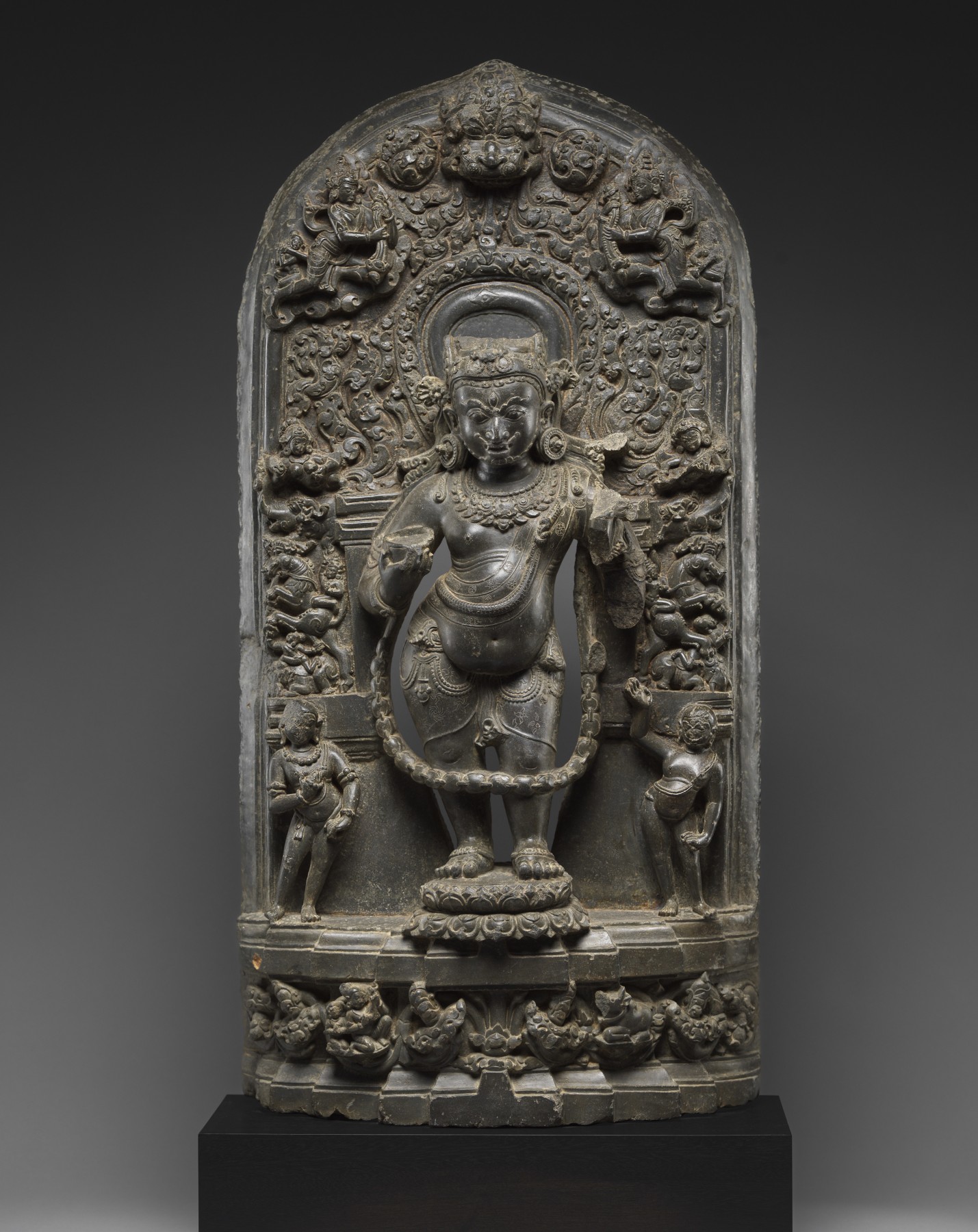
Provenance:
Sotheby's, New York, December 5, 1992, no. 104
American Private Collection
Bhairava is a fearsome form of the Hindu deity Shiva, a manifestation representing the destructive and terrifying aspects of Shiva's power. He is sometimes depicted as an ascetic adorned with a garland of skulls and accompanied by a dog, symbolizing his power over the material world and death. The name "Bhairava" itself means "frightful" or "terrible," and he is also known as Kāla Bhairava, representing the terrifying aspect of time and destruction.

The wrathful form of Shiva is depicted standing in tribhanga on a lotus, his right hand holding a kapala (skull cup), the left hand formerly holding a khatvanga (staff). His face has a terrifying expression with a short curly beard, fangs, moustache, bared fangs, bulging eyes, flaming eyebrows, and a third eye on his forehead. He wears a long garland around his neck, short dhoti incised with foliate motifs, belt suspending beaded festoons below his pot-belly, serpent upavita, transparent sash incised with rosettes faling from his left shoulder, thick foliate colar with tiger-claw pendants, naga earrings, and fragmentary crown. The divinity is flanked by two male atendants standing in tribhanga.
The sides of the stele are richly carved with lion-griffins trampling elephants and scroling foliage, the arched top is decorated with a kirttimukha mask flanked by two flying garland-bearing apsaras.
